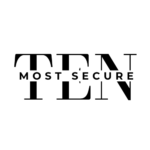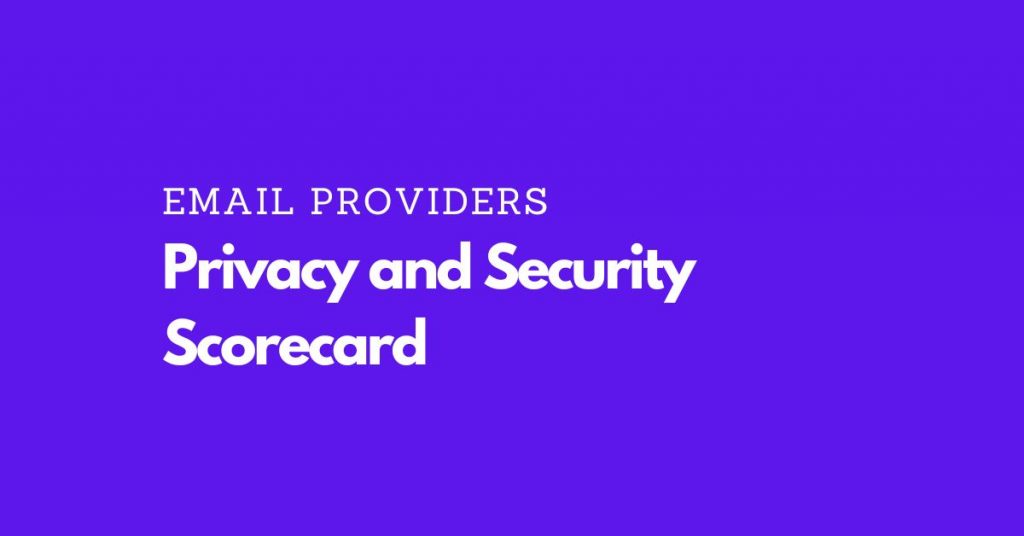Updated August 2025
Email remains the backbone of digital communication even in 2025. It is used to register for services, manage finances, and exchange sensitive information. Yet security and privacy protections are not equal across providers. Some invest in strong encryption and transparent practices, while others still depend on advertising-driven models and outdated safeguards. Most reviews compare features at the surface level. To move beyond marketing claims, we developed a privacy and security scorecard that measures how providers perform on both technical safeguards and privacy protections.
Why a Privacy and Security Scorecard
As email services play such a critical role in personal and professional life, they should be evaluated with the same rigor as any other essential online infrastructure. Instead of relying on subjective “pros and cons,” this scorecard focuses on verifiable criteria such as end-to-end encryption, metadata protection, jurisdiction, DNS and TLS policies, transparency reports, and warrant canaries.
Our framework enables consistent comparison between privacy-focused services and mainstream providers. It highlights areas of strong protection as well as points where compromises remain. The aim is not to designate a single “best” provider but to provide readers and researchers with a clear, structured view of how services measure up in 2025.
How to Read the Scorecard
Each provider is assessed across two dimensions in the privacy and security scorecard:
- Privacy — factors such as end-to-end encryption, metadata handling, business model, jurisdiction, and transparency practices. These indicate how a provider manages and protects user data.
- Technical — elements including TLS, SPF, DKIM, DMARC, SSL configuration, and cryptographic key strength. These determine the resilience of email delivery against interception, spoofing, and tampering.
The two results are combined into a total score.
Privacy and Technical Security Scores
🛡️ Secure Email Providers Privacy Scorecard
| Provider | Domain | E2EE | Metadata Protection |
Business Model |
Hosting Country |
Transparency Report |
Warrant Canary |
Total Score |
|---|---|---|---|---|---|---|---|---|
| Proton Mail | proton.me | ✔ Default | ✔ Yes | Freemium | Switzerland | ✔ Yes | ✘ No | 65 |
| StartMail | startmail.com | ⚪ Optional | ✔ Yes | Subscription | Netherlands | ✘ No | ✘ No | 60 |
| Mailbox.org | mailbox.org | ⚪ Optional | ✔ Yes | Subscription | Germany | ✘ No | ✘ No | 60 |
| Posteo | posteo.de | ⚪ Optional | ✔ Yes | Subscription | Germany | ✘ No | ✘ No | 60 |
| Mailfence | mailfence.com | ⚪ Optional | ✔ Yes | Subscription | Belgium | ✘ No | ✘ No | 60 |
🛡️ Secure Email Providers Technical Scorecard
| Provider | Domain | SSL Grade |
TLS Max |
TLS 1.3 | Forward Secrecy |
SPF | SPF Strict |
DKIM | DMARC | Cert Alg | Key Size |
Days Left |
Tech Score |
|---|---|---|---|---|---|---|---|---|---|---|---|---|---|
| Proton Mail | proton.me | A+ | 1.3 | ✔ Yes | 3 | ✔ Yes | ✘ No | — | ✔ Yes | SHA256withRSA | 4096 | 75 | 20 |
| StartMail | startmail.com | A | 1.3 | ✔ Yes | 2 | ✔ Yes | ✘ No | — | ✔ Yes | SHA256withRSA | 4096 | 69 | 20 |
| Mailbox.org | mailbox.org | A | 1.3 | ✔ Yes | 3 | ✔ Yes | ✘ No | — | ✔ Yes | SHA256withRSA | 4096 | 294 | 20 |
| Posteo | posteo.de | A | 1.3 | ✔ Yes | 3 | ✔ Yes | ✘ No | — | ✔ Yes | SHA256withRSA | 3072 | 188 | 20 |
| Mailfence | mailfence.com | A | 1.3 | ✔ Yes | 3 | ✔ Yes | ✘ No | — | ✔ Yes | SHA256withRSA | 4096 | 65 | 20 |
🌍 Mainstream Email Providers Privacy Scorecard
| Provider | Domain | E2EE | Metadata Protection |
Business Model |
Hosting Country |
Transparency Report |
Ads in Webmail |
Total Score |
|---|---|---|---|---|---|---|---|---|
| Gmail | gmail.com | ✘ No | ✘ No | Ads + Freemium | United States | ✔ Yes | ✔ Yes | 45 |
| Outlook | outlook.com | ✘ No | ✘ No | Ads + Freemium | United States | ✔ Yes | ✔ Yes | 45 |
| Yahoo Mail | yahoo.com | ✘ No | ✘ No | Ads | United States | ✘ No | ✔ Yes | 40 |
| iCloud Mail | icloud.com | ✘ No | ✘ No | Freemium | United States | ✘ No | ✘ No | 40 |
| AOL Mail | aol.com | ✘ No | ✘ No | Ads | United States | ✘ No | ✔ Yes | 35 |
🌍 Mainstream Email Providers Technical Scorecard
| Provider | Domain | SSL Grade |
TLS Max |
TLS 1.3 | Forward Secrecy |
SPF | SPF Strict |
DKIM | DMARC | Cert Alg | Key Size |
Days Left |
Tech Score |
|---|---|---|---|---|---|---|---|---|---|---|---|---|---|
| Gmail | gmail.com | A+ | 1.3 | ✔ Yes | 3 | ✔ Yes | ✘ No | — | ✔ Yes | SHA256withRSA | 2048 | — | 20 |
| Outlook | outlook.com | A | 1.3 | ✔ Yes | 3 | ✔ Yes | ✘ No | — | ✔ Yes | SHA256withRSA | 2048 | — | 20 |
| Yahoo Mail | yahoo.com | A | 1.3 | ✔ Yes | 2 | ✔ Yes | ✘ No | — | ✔ Yes | SHA256withRSA | 2048 | — | 20 |
| iCloud Mail | icloud.com | A | 1.3 | ✔ Yes | 3 | ✔ Yes | ✘ No | — | ✔ Yes | SHA256withRSA | 2048 | — | 20 |
| AOL Mail | aol.com | B | 1.3 | ✔ Yes | 2 | ✔ Yes | ✘ No | — | ✔ Yes | SHA256withRSA | 256 | 133 | 10 |
Privacy and Security Scorecard Methodology
Security and privacy cannot be reduced to a single feature or to marketing claims. An email provider may offer strong encryption but still expose sensitive details through metadata, or it may comply with every technical standard while funding its operations through ads and profiling. To reflect this complexity, we designed a dual-track methodology that examines both privacy practices and technical safeguards. Each dimension tells a different story: privacy shows whether the provider intends to protect data, while technical measures show whether it has the capability to do so.
Data is collected from public sources and validated against current provider documentation. The methodology relies exclusively on measurable criteria to ensure that results remain transparent and replicable.
Privacy Indicators
End-to-End Encryption (E2EE)
Protects the content of emails so that only the sender and intended recipient can read them.
Relevance: The absence of E2EE allows providers or third parties with server access to view message content. Optional E2EE provides limited protection, as adoption among users is often low.
Metadata Protection
Encryption does not hide details such as sender, recipient, IP address, or time of communication. Some providers strip or minimize metadata.
Relevance: Strong metadata protection reduces exposure to surveillance, profiling, and traffic analysis.
Business Model
The financial structure behind a service influences how it treats user data. Subscription-based models align better with privacy, while ad-driven models often rely on behavioral data collection.
Relevance: Providers funded through advertising have incentives to analyze and monetize user activity.
Jurisdiction and Hosting Country
The legal environment of the hosting country determines government access to user data. Jurisdictions with strict privacy protections (such as Switzerland or Germany) offer stronger safeguards than those with broad surveillance powers.
Relevance: Hosting location defines how easily authorities can compel data disclosure and under what legal conditions.
Transparency Reports and Warrant Canaries
Transparency reports disclose how often providers receive data requests and how they respond. Warrant canaries indicate whether a provider has been subject to secret government orders.
Relevance: These mechanisms provide accountability and visibility into external pressures on providers.
Ads and Pixel Tracking
Some providers display advertisements in webmail or allow tracking pixels in incoming messages.
Relevance: Advertising and tracking undermine privacy by enabling profiling and exposing message activity to third parties.
Technical Indicators
TLS (Transport Layer Security)
Encrypts email traffic as it moves between servers. Without TLS, messages are transmitted in plain text.
Relevance: The absence of TLS exposes messages to interception by intermediaries during transit.
SPF (Sender Policy Framework)
Validates whether an email originates from a server authorized by the domain owner.
Relevance: Strong SPF implementation reduces spam and fraud by preventing attackers from sending messages through unauthorized servers.
DKIM (DomainKeys Identified Mail)
Attaches a digital signature to outgoing emails to confirm authenticity and integrity.
Relevance: Reliable DKIM signatures protect against tampering and reinforce trust in sender identity.
DMARC (Domain-based Message Authentication, Reporting and Conformance)
Defines rules for handling emails that fail SPF or DKIM checks, such as rejecting or quarantining suspicious messages.
Relevance: Effective DMARC policies reduce phishing by blocking attempts to spoof trusted domains.
SSL Configuration
Evaluates the strength of webmail connections through certificate quality and server configuration.
Relevance: A robust SSL setup safeguards login sessions and reduces vulnerabilities in user access.
Forward Secrecy and Key Strength
Forward secrecy ensures past communications remain protected even if encryption keys are later compromised. Key strength determines the resistance of cryptographic keys to brute-force attacks.
Relevance: Together, these measures make large-scale decryption of stored or intercepted communications significantly more difficult.
Conclusion
This privacy and security scorecard highlights the differences between privacy-first services and mainstream email platforms. Privacy-focused providers generally excel in protecting user data through stronger policies and encryption, though they sometimes lag in protocol adoption or ecosystem integration. Mainstream providers, on the other hand, typically achieve high marks in technical security and deliverability but rely on advertising models or broad jurisdictional powers that weaken privacy.
The right choice depends on what matters most: maximum data protection or seamless compatibility. Readers interested in specialized providers can explore our Top 10 Most Secure Email Providers for a closer look at services built with privacy as the primary goal. For those who prefer widely used platforms, an upcoming guide to the Top 10 Most Secure Popular Email Services will compare the largest players with the same rigor.

